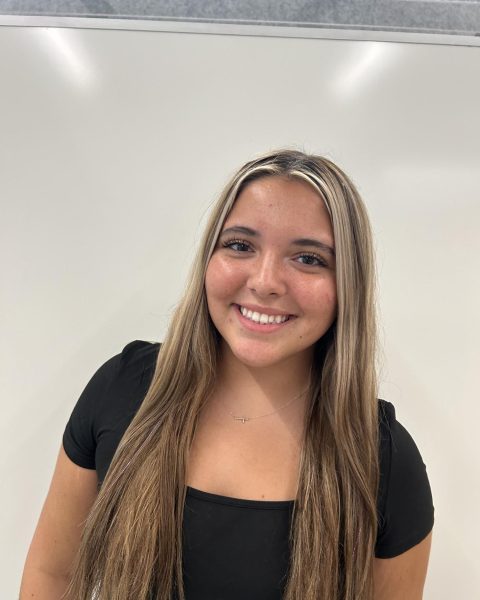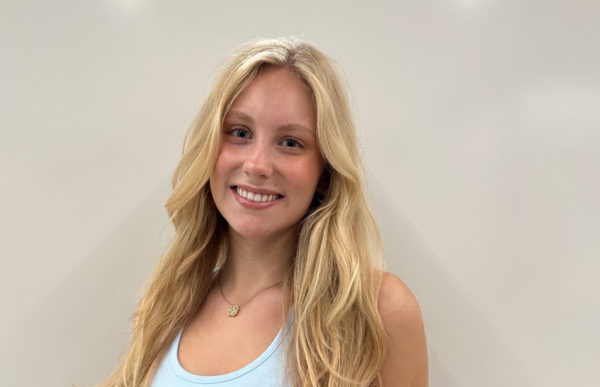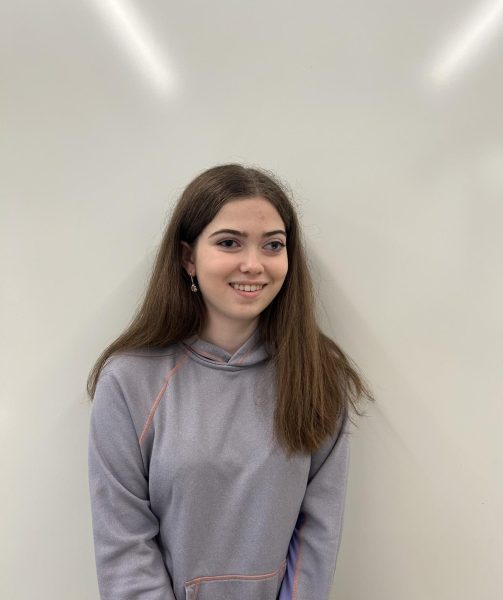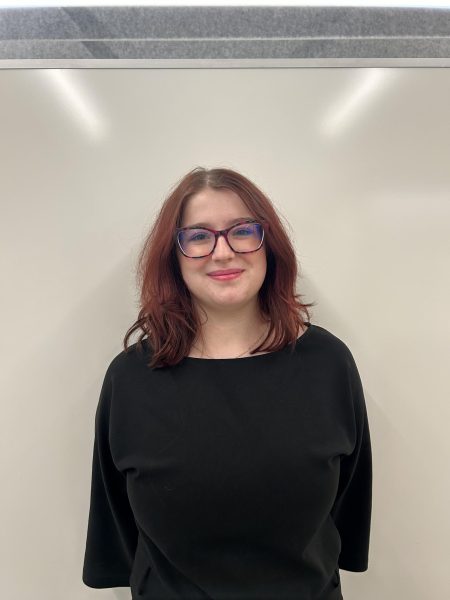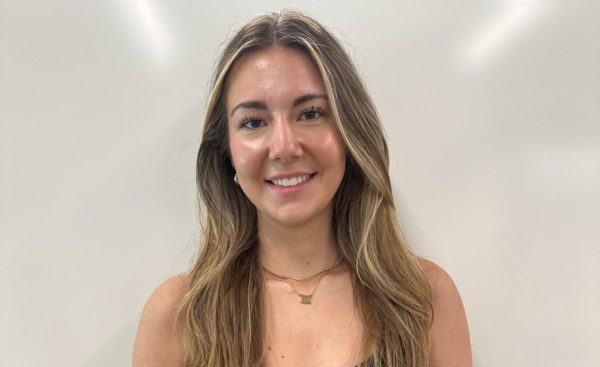Every fall, another round of high school seniors throw themselves into the gauntlet of college applications, standardized tests, student loans and financial aid. For many students this process is not only new but also stress-inducing, but at Blue Valley, this process is streamlined through programs such as Xello and CommonApp and help from counseling staff to complete their first step on their college journey.
Attention Class of 2025!
(Words by Ava McGuire)
When considering attending a prestigious or out-of-state college with a low acceptance rate, class size is always something to take into concern, as the number of applicants is the major deciding factor in how many students will be accepted into that year’s freshman class.
Unfortunately for the junior class, they could be the largest U.S. college freshman class ever. In 2007, U.S. births were at the highest levels seen since the Baby Boomers, reaching as high as 4.3 million.
In a projection made by the Western Interstate Commission for Higher Education, high school graduation rates should reach a peak in the U.S. with the class of 2025.
Additionally, the class of 2025 will be significantly more diverse than any other graduating class, as more students of color and children of second-generation immigrants will be receiving diplomas. In fact, roughly 75,000 more Hispanic high school graduates were counted as of 2019.
The last projection made by the Western Interstate Commission for Higher Education in 2016 predicted graduation rates would decrease, which created worry within the college community about institutions having to close or merge. However, the outlook as of 2020 pictures 2025’s graduation rates to be much higher.
Application numbers have risen to an unprecedented level at top universities in recent years, and this number will grow with the class of 2025.
Now that many universities are going test-optional, the volume of the applicant pool is growing — but so is the rejection pool. In the 2021 admission process, there was a record number of early admissions, which were met with a record number of deferrals and rejections. According to Top Tier Admissions, 80 percent of Harvard’s early applicants were deferred.
This number of rejectees will only increase, as the undergraduate enrollment number for 2021 was 15.4 million — the projected number of applicants for 2025 is 16.4 million.
As the juniors’ college admissions process continues to grow nearer, college acceptance rates could be drastically affected by the large size of the class of 2025. According to the Pew Research Center, this wouldn’t be the first time that colleges and universities have experienced a “college admissions bubble.”
Optional ACT/SAT’s
(Words by Callie Dyches)
Since college applications have started making ACT and SAT scores optional, there have been debates about whether or not students even need to take them.
Senior Ella Hibbard took the ACT, but it didn’t end up being very beneficial to her.
“I’m with JCCC’s programs already, so from my experience, it’s not that necessary,” she said. “There’s ways to get around it.”
While Hibbard does concede that “it’s great for some careers,” she feels that many people don’t even need to worry about national testing.
“I’m in culinary school and general studies, and they have not once brought up your ACT,” she said. “I wasn’t even asked for it when I applied for my college programs.”
Hibbard agrees that taking the ACT or SAT should be optional, especially because many students have different career paths and goals.
“There’s no value for them stressing themselves out and getting frustrated with a test that really doesn’t affect what they want to do,” she said.
She maintains that students’ needs should always come first.
“I like [that] students can take it and that it’s up to them,” she said. “It should be the student’s choice.”
Despite Hibbard’s affirmation that the ACT and SAT aren’t essential, she recognizes the scores can be useful.
“If you score high, it’s going to make you look better,” she said.
She firmly believes students should use national testing to their advantage to leverage their chances in college.
“If you know what you plan to do for your career, and you know it’s going to affect you, just take it,” she said. “You can always go back and take it [again]. It’s not a once and done kind of thing.”
Naviance Xello
(Words by Aspen Gallentine)
The district switched the third-party college planning platform that they provide for students from Naviance to Xello this year.
“Our contract was up, so it was time to evaluate the features of Naviance and whether or not we still thought that was helping our students in the best way,” counseling department chair Kristin Stallbaumer said.
Blue Valley uses these third-party websites to assist students with college and career planning, and to help them with their college applications when they’re seniors. Xello has been regarded as smoother to navigate than Naviance, and students generally prefer it, as it can directly connect to CommonApp, where seniors actually turn in their applications to different schools.
Senior Molly James said she would have used the resources provided to her in her freshman through junior years if they were on Xello, which provides a specialized college search engine. However, she believes the switch comes with its disadvantages nonetheless.
“It was kind of abrupt,” James said. “Freshman through junior year counselors were like ‘Oh, Naviance is everything you’ll use for college and career search,’ but now it’s [not].”
With a different take than most, senior Dominic Booth not only doesn’t feel that Xello isn’t an improvement, but he isn’t a fan of the use of third-party websites for college applications at all.
“I started using it recently,” he said. “I feel like it doesn’t have any more resources than Naviance.”
While Booth believes that familiarity is key in using an application like this, and therefore believes the abrupt switch to Xello was jarring for many, he said he prefers to email the schools himself.
“I prefer the direct line of communication, especially for me, who’s applying [to] smaller schools,” Booth said. “I find that it teaches you more skills.”
As an individual tasked with assisting students through the switch, while having no in on the inner workings of the decision, gifted teacher Jessica Spriggs said both programs do a similar job, but students have said the college planning process has been a bit more streamlined.
Much like James, Spriggs believes one of Xello’s most notable features is its unique college search engine.
“These websites make it to where there’s less steps for them to complete and [fewer] places they have to check to make sure that everything required for the process is submitted to colleges,” Spriggs said.
The switch is still in the earliest stages, and the counseling department has extensive plans to integrate it into the use of all grades, first having released it to the seniors for them to begin the college application process. Next, they plan on having the juniors experiment with it, then the sophomores, and eventually the freshmen.
FAFSA
(Words by Ava McNiel)
With the start of a new school year comes a new round of graduates. Some students may struggle with providing themselves with finances to get them through college.
FAFSA, the free application for federal student aid to assist students who need to pay for college, is being brought to more students’ attention this school year. After a significant reduction in questions, the application now consists of fewer than 50 questions, down from more than 100.
Currently, FAFSA is being taught in business classes and lightly touched on in advisory. According to business teacher Dwight Williams, the FAFSA process isn’t a well known topic at Blue Valley.
“I don’t know how many students are being taught about it or have any knowledge of it,” Williams said. “When I ask students about it, they [say they’ve] never heard of it.”
With FAFSA information only being brought up in business classes that are optional courses, the amount of people actually being taught about this topic is slim.
“We’re only reaching a small population of students by talking to them,” Williams said. “Some of those students are freshmen and sophomores [who] don’t really have to worry about it.”
Business teacher Brooke Poskin suggests changes in the exposure of FAFSA to students.
“Continuing to talk about it [is important,] whether that be starting more in the junior advisory class because that’s when you start that planning process,” Poskin said.
Although students may take in the information of FAFSA through one ear and throw it out the other, teachers are emphasizing its importance and how it can help students in all different boats.
“There’s still a stigma that’s like, ‘If I don’t need scholarships, then I don’t need to do FAFSA,’” Poskin said. “You still need to apply even if you don’t think you’re going to need the scholarships.”
Going through the free application process will only benefit students, Poskin said, because many of them don’t realize what grants and loans they’re eligible for. Poskin believes it’s better to not take the money than not have it offered at all.
“They’re going to have to fill something out like that down the road anyway, so going through that process is only going to benefit them,” Williams said. “There’s tons of opportunities for students applying for colleges not just to get scholarships but continually getting student loan help throughout their college [years]. The more teachers [who] can talk about it and make students aware of it, the better.”
College Apps
(Words by Miranda Henry)
The college application is a process every senior dreads every fall, from deciding where to apply or how to write the essay that depends on what scholarship they think you deserve. Senior Maggie Richardson discusses how her application process went.
After applying to the University of Arkansas and Kansas State University, Richardson found the task smoother than she expected.
“It went easier than I thought because of things like the Common Application, which is a super great tool to use when applying for colleges,” Richardson said. “Since you can apply to multiple [places] at once, applying is not that bad.”
With useful tools like the CommonApp, Richardson said her application didn’t take long.
“It took probably a week, but I worked on it over the summer and I did the CommonApp over the course of a couple of days. Both are state schools and they require essays so that wasn’t that hard [because] I already had written essays in Avid.”
Although Richardson said her application process was easy, she also believes Covid had a part in making it that way.
“I got an average score on the ACT, but it doesn’t depend on getting into colleges anymore,” Richardson said. “That happened after Covid and also something else after Covid was that Arkansas has given in-state tuition now for the past couple of years to states surrounding Arkansas.”
Sending applications isn’t always as easy as Richardson’s process was.
“My advice for juniors is definitely apply sooner than they think you should,” she said. “Getting early admission [can help] you get preferred admission — just apply as soon as you can.”




